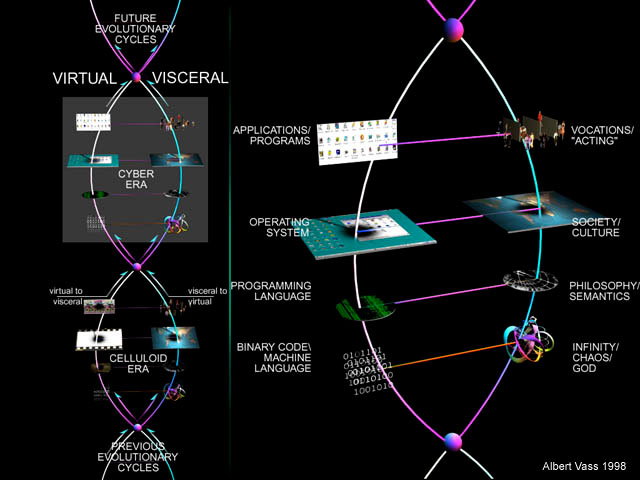
Virtual Design

There is a useful perceptual connection to be made between our minds and the computer; more specifically how we relate to the world through language and society and how the computer relates to the virtual world through programming and operating systems. The edifice of vocationalism is an important paradigm we use to successfully interface with society. This paradigm has been generated through history in the evolution of language. In an analogous level the computer uses specific applications to interface with the user and the virtual environment. It was generated by the evolution of programming language. Exemplifying this analogy would be to say something like Autocad is architect, Excel is accountant, Photoshop is artist, Word is author…etc. The level under these perceptual interfaces is everyday human behavior and the computers' user interface. The level of analogy here would be a culture seen as a type of user interface. Under this we have the operating system and machine language that supports the user interface, and respectively the philosophy and semantic rigor that support our own cultural and societal interface.
As our diagram above suggests, this process is constantly evolving through time. Things once dreamed in a previous technology are used to dream newer things that are actualized in subsequent time periods. When the perceived visceral acts and their virtual counterparts meet in time, their modes are reversed. The visceral becomes virtual, in that our waking physical reality tunnels and terrains are used to model a new virtual level. The virtual becomes visceral, in that the thing that was dreamt and fictional becomes a tangible part of our waking reality.
How is this model related to the creative process? By comparing the way humans interact on a vocational level and how applications interact with each other we can see that the computer breaks down many of the barriers that exist between idea and its realization on the physical level. If one has a vision for an environmental design for example, the computer allows them to jump between many applications to study ideas and to get them across. If this same process was going on solely in the visceral world using older analog technologies, more practical barriers would exist between the idea, its representation and ultimately its actualization. By interacting with the world on this level, we also take part in its evolution.
-Albert Vass